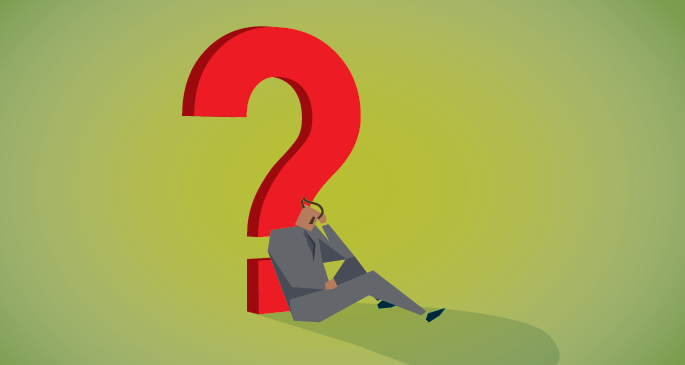- Diseases
- Acoustic Neuroma (14)
- Adrenal Gland Tumor (24)
- Anal Cancer (68)
- Anemia (2)
- Appendix Cancer (16)
- Bile Duct Cancer (26)
- Bladder Cancer (72)
- Brain Metastases (28)
- Brain Tumor (232)
- Breast Cancer (714)
- Breast Implant-Associated Anaplastic Large Cell Lymphoma (2)
- Cancer of Unknown Primary (4)
- Carcinoid Tumor (8)
- Cervical Cancer (158)
- Colon Cancer (166)
- Colorectal Cancer (118)
- Endocrine Tumor (4)
- Esophageal Cancer (44)
- Eye Cancer (36)
- Fallopian Tube Cancer (8)
- Germ Cell Tumor (4)
- Gestational Trophoblastic Disease (2)
- Head and Neck Cancer (12)
- Kidney Cancer (128)
- Leukemia (342)
- Liver Cancer (50)
- Lung Cancer (286)
- Lymphoma (278)
- Mesothelioma (14)
- Metastasis (30)
- Multiple Myeloma (100)
- Myelodysplastic Syndrome (60)
- Myeloproliferative Neoplasm (6)
- Neuroendocrine Tumors (16)
- Oral Cancer (100)
- Ovarian Cancer (172)
- Pancreatic Cancer (160)
- Parathyroid Disease (2)
- Penile Cancer (14)
- Pituitary Tumor (6)
- Prostate Cancer (146)
- Rectal Cancer (58)
- Renal Medullary Carcinoma (6)
- Salivary Gland Cancer (14)
- Sarcoma (238)
- Skin Cancer (296)
- Skull Base Tumors (56)
- Spinal Tumor (12)
- Stomach Cancer (64)
- Testicular Cancer (28)
- Throat Cancer (92)
- Thymoma (6)
- Thyroid Cancer (98)
- Tonsil Cancer (30)
- Uterine Cancer (80)
- Vaginal Cancer (16)
- Vulvar Cancer (20)
- Cancer Topic
- Adolescent and Young Adult Cancer Issues (20)
- Advance Care Planning (10)
- Biostatistics (2)
- Blood Donation (18)
- Bone Health (8)
- COVID-19 (362)
- Cancer Recurrence (120)
- Childhood Cancer Issues (120)
- Clinical Trials (632)
- Complementary Integrative Medicine (22)
- Cytogenetics (2)
- DNA Methylation (4)
- Diagnosis (232)
- Epigenetics (6)
- Fertility (62)
- Follow-up Guidelines (2)
- Health Disparities (14)
- Hereditary Cancer Syndromes (126)
- Immunology (18)
- Li-Fraumeni Syndrome (8)
- Mental Health (116)
- Molecular Diagnostics (8)
- Pain Management (62)
- Palliative Care (8)
- Pathology (10)
- Physical Therapy (18)
- Pregnancy (18)
- Prevention (918)
- Research (392)
- Second Opinion (74)
- Sexuality (16)
- Side Effects (604)
- Sleep Disorders (10)
- Stem Cell Transplantation Cellular Therapy (216)
- Support (402)
- Survivorship (320)
- Symptoms (182)
- Treatment (1786)
What is a prostate, and what does it do?
4 minute read | Published August 16, 2024
Medically Reviewed | Last reviewed by an MD Anderson Cancer Center medical professional on August 16, 2024
The prostate is a gland found only in males. It plays a role in maintaining fertility in sexually mature males, as well as in the act of procreation itself.
The prostate wraps around the urethra, the tube that urine passes through on its way out of the body. It is located in the pelvis: behind the pubic bone, in front of the rectum and below the bladder.
But what exactly does a prostate do? How do you know if yours isn’t working right? And, when should you see a doctor if you think something is wrong?
Read on for the answers to these questions and more.
How big is the prostate gland?
The size of a man’s prostate increases naturally as he ages. In his 20s and 30s, it’s usually around the size of a walnut in its shell. By the time men reach their 40s to 60s, though, it can be the size of a small tangerine or even larger. In some cases, it can be as big as an orange.
How does the prostate work?
The prostate’s main purpose is associated with procreation. It generates proteins needed for human reproduction, as well as some of the seminal fluid found in ejaculate that carries sperm out of the penis during sexual orgasm.
But the prostate also helps keep urine inside the bladder. It does this with a little valve where those two organs meet. This valve is not something men can consciously control, but the muscles around it keep the valve closed when it’s not appropriate to urinate and open it when it is.
How would I know if my prostate is not working right?
One of the most common conditions that men experience as they get older is called “benign prostatic hyperplasia,” or BPH. That’s a fancy way of saying, “Your prostate is enlarged.”
Because the prostate is situated just below the bladder and wrapped around the urethra, BPH can prevent the valve from opening as effectively, compress the tube itself and keep men from passing urine as freely as they might’ve when they were younger.
Symptoms of BPH include:
- slower urine stream
- weaker urine stream
- intermittent urine stream, or only producing a little bit at a time
- urinating more often
- waking up to urinate at night
- feeling like you haven’t completely emptied your bladder
BPH symptoms usually start slowly. But if they bother you or you notice them more, talk to your doctor. There are medications and procedures that can help control them. BPH is very common, and any doctor who takes care of men above age 40 should know how to treat it.
Can any of these symptoms be caused by prostate cancer?
Yes. BPH and prostate cancer share some symptoms. But most of these symptoms will be due to something other than prostate cancer.
The top reason for these symptoms is a prostate infection. An inflamed or enlarged prostate is the second most common reason, and prostate cancer is a distant third.
Most men will have some symptoms of BPH by the time they’re in their 40s. But prostate cancer generally occurs in men in their 60s. It is very rarely found in anyone younger than 40.
Prostate cancer does tend to appear earlier in Black people, though, which is why our recommendations are to start screening Black men at a younger age than other populations. Prostate cancer screening for people who are at high risk should begin at age 40. Screening for people at average risk should begin at age 45.
When should I get checked out if I think something’s wrong?
See a urologist right away if you have:
- an inability to urinate, which could be a sign of blockage
- blood in your urine
Blood in your urine can also be a sign of a urinary tract infection. See a urologist to find out if you need further examination.
Are there any other ways of detecting prostate problems?
Yes. A prostate-specific antigen (PSA) blood test is part of a standard prostate cancer screening. PSA is one of the proteins involved in procreation, and elevated levels of it can sometimes be a sign of prostate cancer.
Rectal prostate exams are another method. That’s because the prostate gland has different “zones.” The zone that touches the urethra directly does most of the growing due to BPH, so it can pinch and narrow that tube.
The zone involved with cancer is more toward the backside, right next to the rectum. About 80% of all prostate cancers form in that zone. That’s why in the days before the PSA blood test, doctors felt for lumps on the prostate through the rectum and took biopsy specimens from that location.
Can I live without a prostate?
Yes. But if it’s removed, you won’t be able to have children without seeing a reproductive specialist. There may be some issues with sexual or urinary function. These are normally temporary, but that depends on the individual patient and their cancer’s characteristics.
Can I still get erections without a prostate?
Yes. See a sexual function specialist if prostate cancer has advanced to the point where its treatment affects your ability to have erections naturally. They can come up with a plan to help you get erections again.
Request an appointment at MD Anderson online or call 1-844-254-2250.
Related Cancerwise Stories

The size of a man’s prostate increases naturally as he ages.
Lisly Chéry, M.D.
Physician





